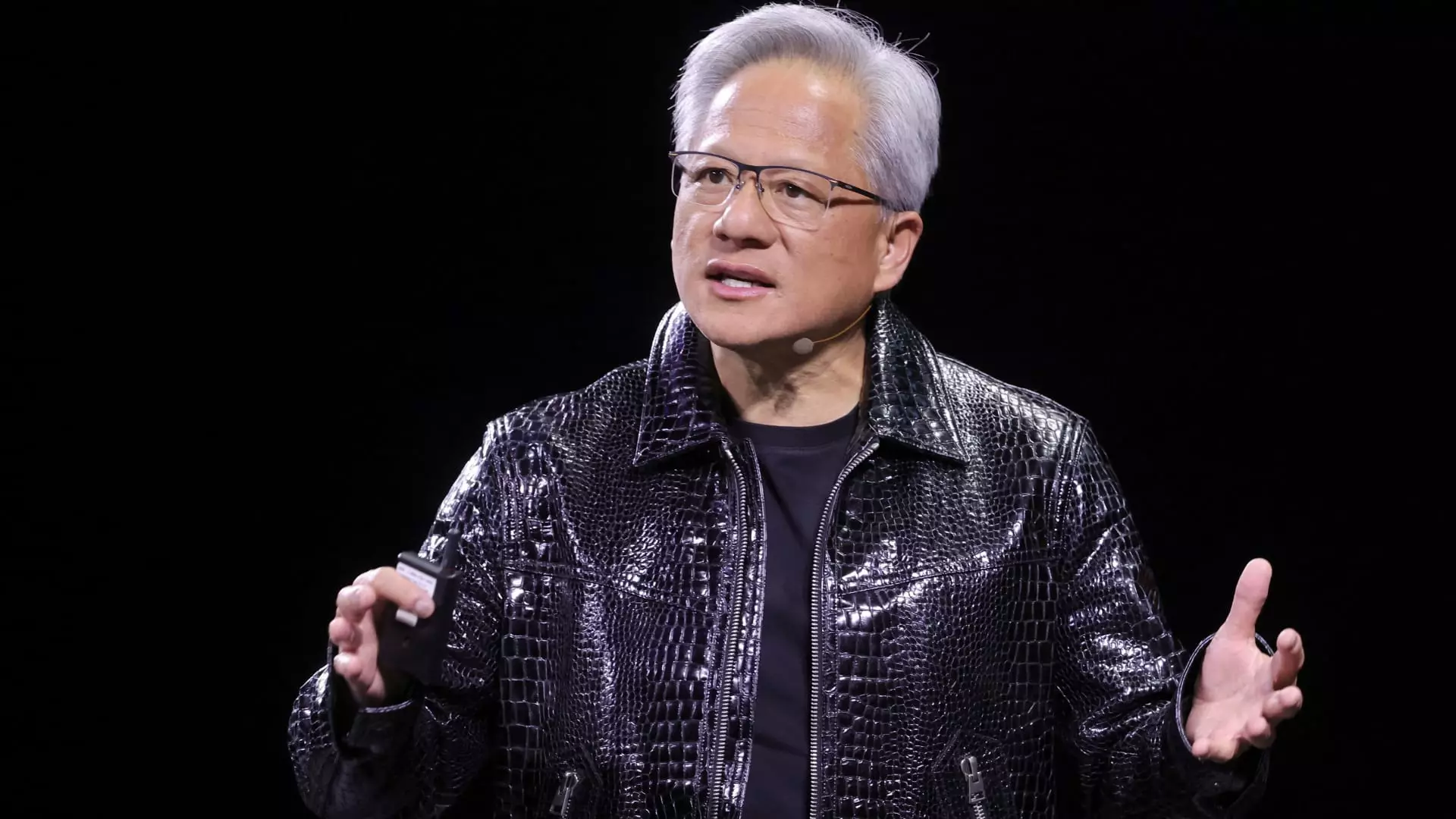When Jensen Huang, the CEO of Nvidia, took to the stage for the company’s first-ever “Quantum Day,” one would expect a rallying call for investors and supporters of quantum computing. Instead, what transpired was a remarkable and disheartening demonstration of how public statements can ripple through financial markets. Huang’s attempt to clarify his earlier assertion that quantum computing would take “at least 15 years” to prove beneficial not only backfired but also shed light on the precarious state of the quantum industry. In a field that thrives on optimism and revolutionary potential, Huang’s candor reveals a sobering truth: despite our excitement, we are still grappling with the uncertainties inherent in this cutting-edge technology.
Contradictory Signals and Market Response
During the event, Huang’s attempt to reframe his earlier comments appeared to exacerbate the situation, sending stocks in the quantum sector spiraling. While one could argue that the potential of quantum computing remains vast, Huang’s own words communicated a sense of hesitance and raised red flags. The dramatic decline of stocks like D-Wave, which dropped 18%, suggests that investors received Huang’s reassurances as anything but positive. In a world where tech investments are often fueled by ‘future hype,’ Huang’s honesty might have been a disservice. It underlined an unsettling question for investors: if the voice of one of the industry’s leaders expresses uncertainty about the timeline, what does that imply for the future viability of quantum technologies?
Marketing Missteps: The “Computer” Conundrum
One of the most striking aspects of Huang’s address was his contention that quantum computing should not merely be regarded as a replacement for classical computing. Here, he urges the rebranding of quantum systems as specialized tools that work in tandem with existing technological frameworks. This perspective is fraught with complexity, as it piques concerns over consumer and investor expectations. If quantum computing is not positioned as the next generation of computing but as a supplementary tool, what does that say about its ultimate impact? Analysts like Quinn Bolton have rightly pointed out that Huang’s remarks sidestep the unresolved challenge of properly communicating the essence of quantum technology to a wider audience. The narrative surrounding quantum computing runs the risk of being diluted, thus hampering its perceived value and potential.
The Innovation Disconnect
Another concerning takeaway from Huang’s conference is the clear disconnect between technological advancement and market confidence. While Nvidia is undeniably at the forefront of developing GPUs and integrating them for quantum purposes, the skepticism from investors remains palpable. Despite Huang’s optimistic outlook on the transformative potential of quantum computing, market indicators tell a different story. The Quantum Defiance ETF’s gloomy performance, down over 4% this year, reflects a broader anxiety regarding the industry’s capability to deliver on hype. Until quantum computing transitions from theoretical promise to practical application, the gap between innovation and market faith will likely widen.
An Unsustainable Dependence on Promises
Moreover, the reliance on grand visions without actionable frameworks generates an unsustainable cycle of hope and disappointment within the tech sector. Huang’s belief in the transformative potential of quantum may resonate with enthusiasts, yet it also furthers the perception of quantum computing as more aspirational than achievable. The tech community must confront the uncomfortable truth that, without definitive milestones or clear schedules, the allure of quantum technology could lead to a prolonged period of disillusionment. Enthusiasts must ask whether we are witnessing a promising revolution or merely indulging in wishful thinking.
Future Implications: A Call for Realism
In summation, while Huang’s intentions may have been to cultivate excitement and redemption for quantum computing, the session unwittingly showcased the industry’s fragile state. As viewers of this intriguing yet tumultuous sphere, it’s essential to balance our hopes with a level of realism that respects the complexity of technological evolution. Jensen Huang’s quantum conference will be remembered not just as a moment of potential clarity, but as a disturbing reflection of an industry wrestling with itself. If sustained growth in quantum computing is to materialize, stakeholders must prioritize transparency and realistic assessments over inflated promises. The future of quantum might just hinge on these delicate matters.

